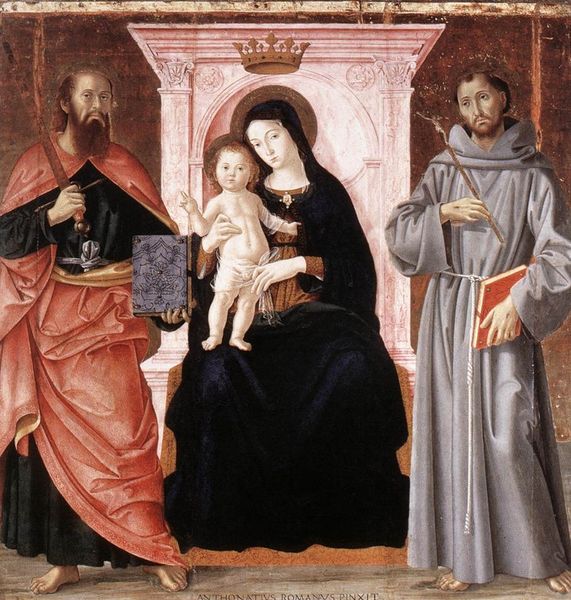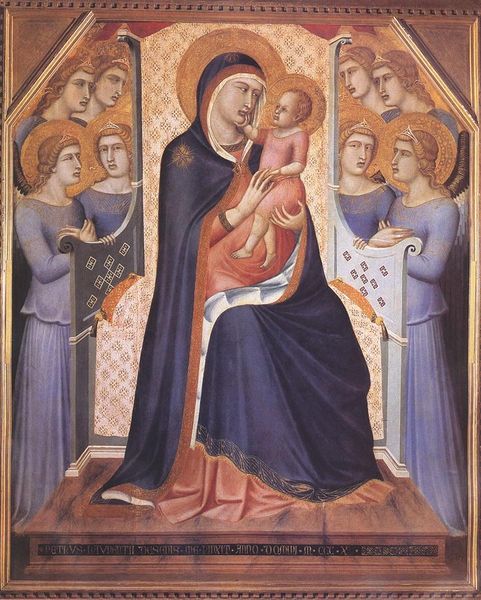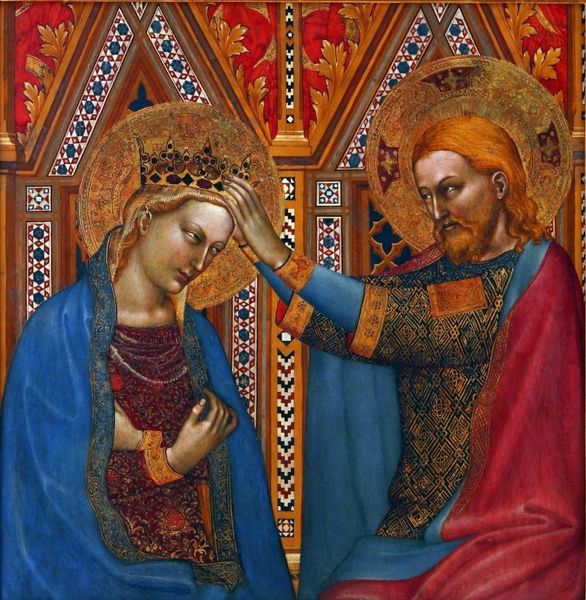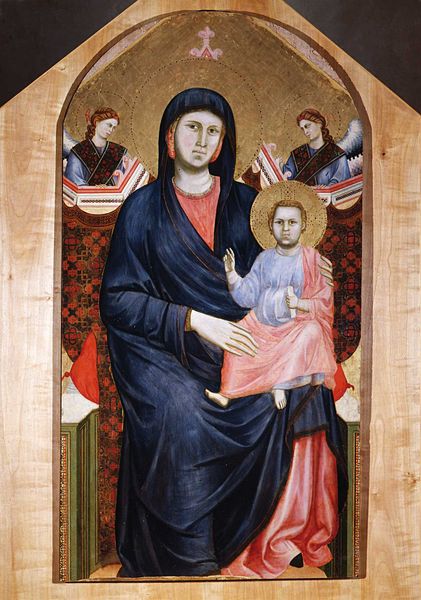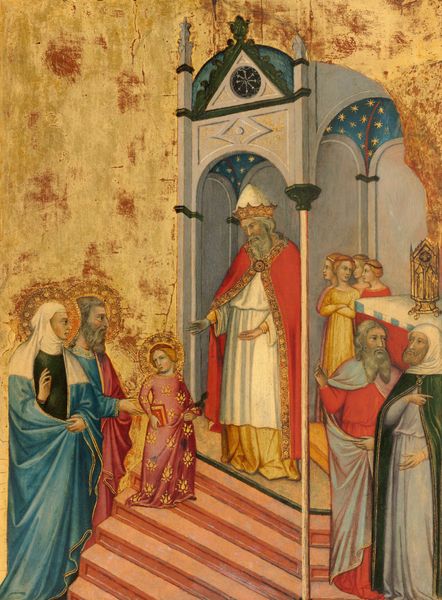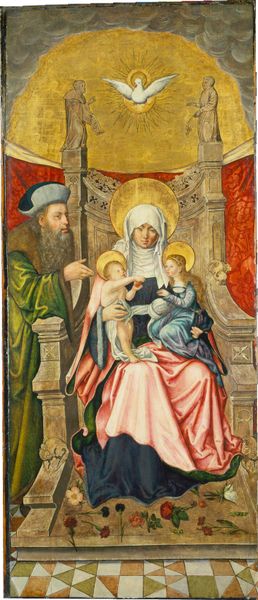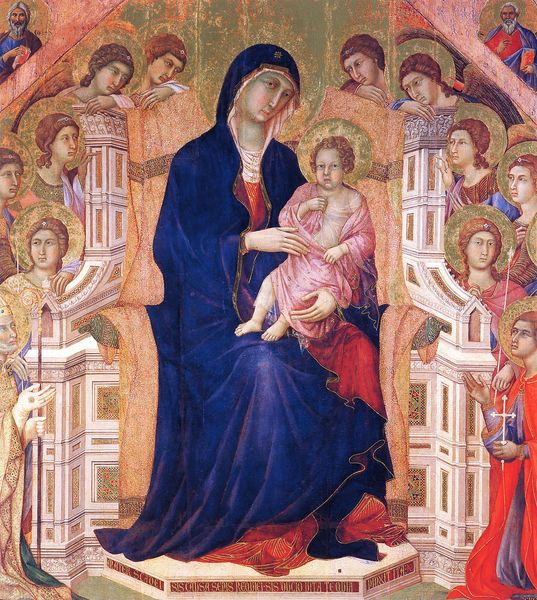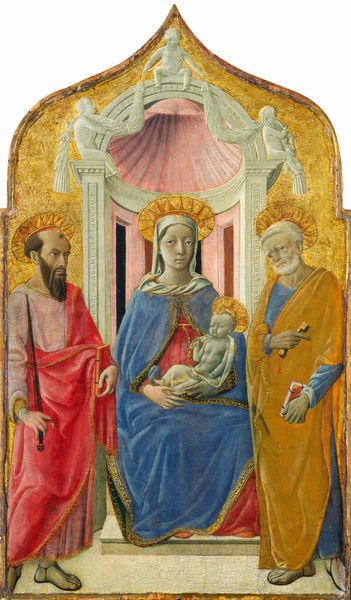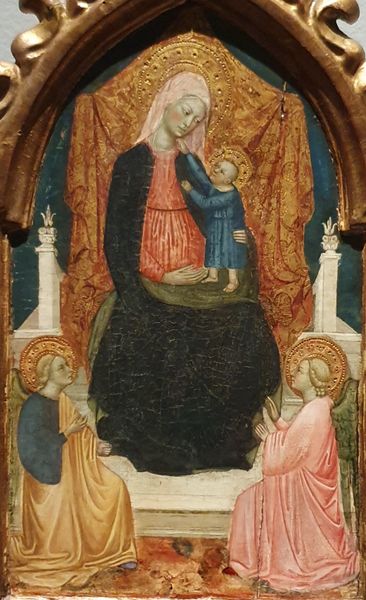
The Presentation of Christ (from Altar of Philip the Bold) 1399
0:00
0:00
melchiorbroederlam
Musée des Beaux-Arts de Dijon, Dijon, France
tempera, painting
#
medieval
#
narrative-art
#
tempera
#
painting
#
figuration
#
oil painting
#
christianity
#
history-painting
#
international-gothic
#
facial portrait
#
3d art
Copyright: Public domain
Editor: So here we have Melchior Broederlam's "The Presentation of Christ" from 1399, painted in tempera. It strikes me as incredibly formal, almost staged. What do you see in this piece, especially in relation to the period it was created? Curator: I see a work deeply entrenched in its time, yet subtly pushing against societal norms. It presents a specific religious narrative, yes, but through the lens of the International Gothic style, reflecting the concerns and the visual culture of the Burgundian court. The meticulous detail, the rich colors, the elongated figures—it speaks to power and wealth. Editor: Power and wealth, sure, but doesn't the religious aspect temper that display somewhat? Curator: It’s a complicated dance. The Church, in many ways, legitimized and upheld existing power structures. So, in depicting this scene, Broederlam isn’t just illustrating scripture; he's reinforcing a worldview. Consider the limited roles afforded to women during this period. While Mary is central, she’s presented in a very specific, controlled manner. Do you think this challenges or reinforces contemporary beliefs about women's roles in society? Editor: I guess I hadn't thought of it like that, but the way Mary is portrayed, her passivity, it seems like it really underscores that expectation of women at the time. Is there any way to look at it that offers a slightly different reading, or am I being too optimistic? Curator: Perhaps we can interpret the painting's emphasis on Mary’s devotion as subtle, though still contained, empowerment, or as representation of motherhood as the defining aspect of a woman’s existence. It’s essential to acknowledge that artistic creation doesn't exist in a vacuum. We must bring in that conversation about the broader issues, but still not overemphasize it. Editor: That makes me think about art very differently, not just something pretty to look at but part of a conversation. Curator: Exactly!
Comments
No comments
Be the first to comment and join the conversation on the ultimate creative platform.

